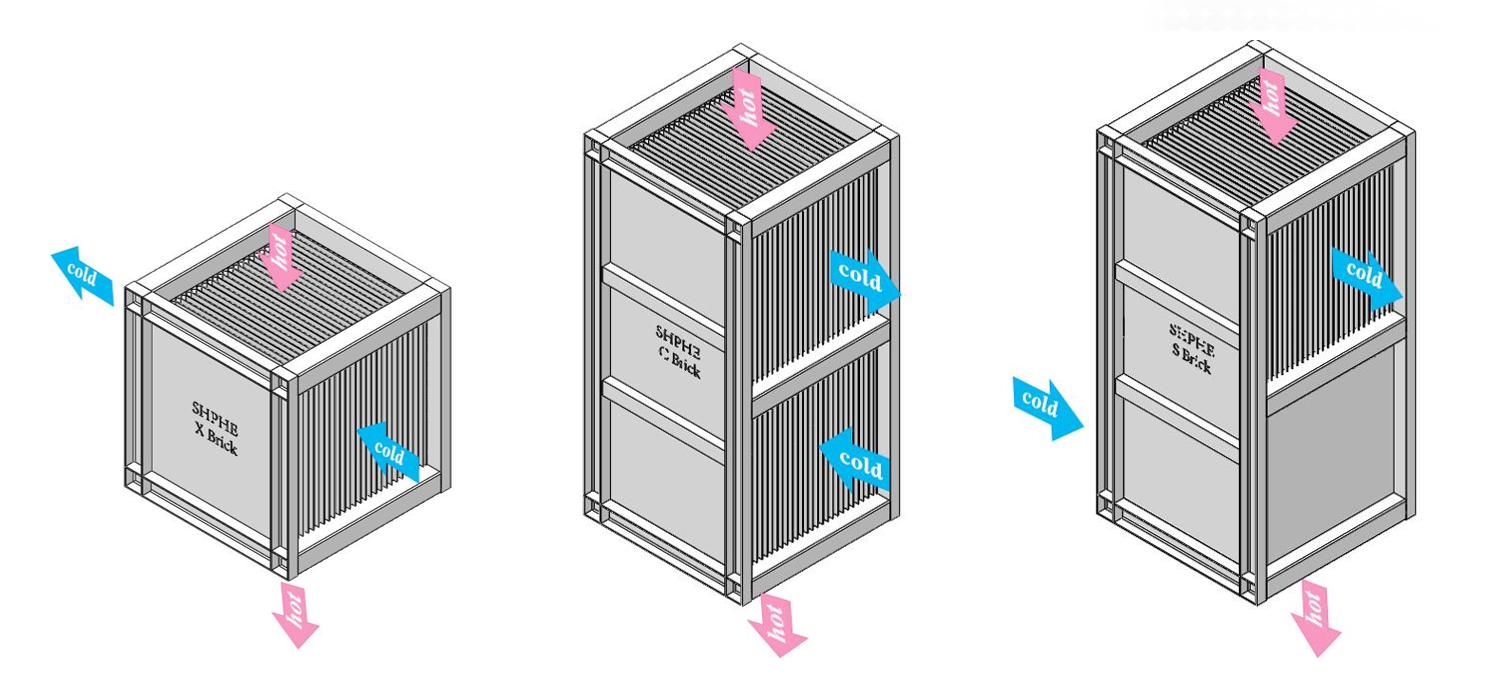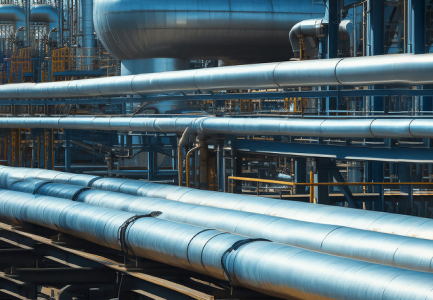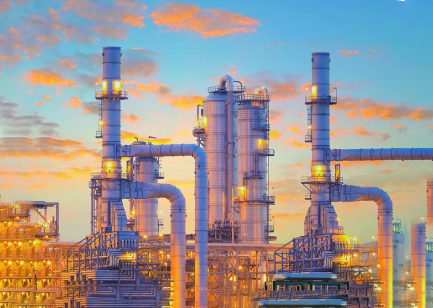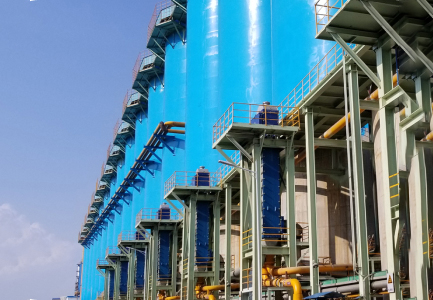
Products
Plate Air Preheater
Certificates: ASME, NB, CE, BV, SGS etc.

A plate air preheater is a heat exchanger designed to recover waste heat from industrial exhaust gases (e.g., flue gas) and transfer it to incoming combustion air or process gas. By preheating air, it significantly improves thermal efficiency, reduces fuel consumption, and lowers greenhouse gas emissions. This device is widely used in energy-intensive industries to optimize energy utilization and comply with environmental regulations.


In search of expert advice? Our experienced engineers stand ready to assist you. Discover more about our heat exchangers and compl-ementary services, all designed to precisely align with your needs.
contact us
Product Details
-

What is Plate Air Preheater?
Plate Air Preheater operates based on heat exchange principles, utilizing either counterflow or crossflow configurations. Corrugated metal plates form alternating channels for hot and cold fluids, and their modular, building-block design allows for flexible and scalable assembly to meet varying system requirements. Exhaust gases (such as flue gas or process waste gas) pass through one side of the plates, transferring their heat to the plate walls via conduction. Simultaneously, combustion air or process air flows on the opposite side of the plates, absorbing the heat through the thin plate walls. The corrugated design induces turbulence, enhancing convective heat transfer efficiency. This process reduces the temperature of exhaust gases while increasing the temperature of incoming air, which is then directed into boilers, furnaces, or reactors. By recovering heat from hot exhaust gases and preheating cold air, the plate air preheater significantly improves overall system efficiency. The modular design also simplifies maintenance, as individual plate modules can be easily replaced or reconfigured without disrupting the entire system, ensuring long-term operational reliability and cost-effectiveness. -

Why Plate Air Preheater?
Plate air preheaters significantly benefit environmental protection by recovering waste heat from high-temperature exhaust gases (e.g., flue gas) to preheat combustion or process air. This heat exchange process improves energy efficiency by 1% for every 18°C reduction in exhaust temperature, directly lowering fuel consumption and associated greenhouse gas emissions (CO₂, SO₂). By reducing exhaust gas temperatures, they mitigate thermal pollution and minimize particulate release into the atmosphere. Their corrugated plate design enhances heat transfer efficiency while filtering airborne pollutants like dust and acidic residues, improving air quality. The durable modular structure extends equipment lifespan, reducing maintenance frequency and material waste. Additionally, their low-noise operation minimizes acoustic pollution, supporting cleaner industrial processes and sustainable resource utilization.
Product Advantage
-
High Thermal Efficiency
The heat transfer coefficient of plate heat exchange elements is 1-3 times higher than that of tubular elements. By optimizing the combination of flow channel spacing and flow length based on the volume changes of hot and cold media before and after heat exchange, the design achieves optimal heat transfer performance and pressure drop.Excellent corrosion resistance
Materials can be selectively chosen according to different media and working conditions to ensure equipment longevity. Additionally, a high-low temperature graded design can be adopted, using different materials for different temperature ranges, effectively reducing manufacturing costs. -
Lightweight and Compact
Typically made from materials stainless steel, it is both lightweight and resistant to corrosion. Offers a significantly larger heat exchange surface area per unit volume, maximizing efficiency while minimizing spatial footprint.Cost-Effective
The system cuts operational and maintenance costs via efficient design and modular assembly. It minimizes energy use, maximizes heat transfer, and enables easy installation and scalability. Modular components reduce downtime, extend lifespan, and allow cost-effective upgrades, ensuring long-term economic benefits and flexibility.
Product Parameters
| Parameter Item | Parameter |
|---|---|
| Max. Area | 40000㎡ |
| Plate Thickness | 0.6 – 2.0 mm |
| Design Temperature | -20 ~ 800℃ |
| Max. Design Pressure | 6 Bar |
| Plate material | 304,316L,2205,310S,904L,Corten-A |
How to design and manufacture
Plate Air Preheater
Modular Design
- X brick, E brick, C brick, and S brick serve as the four fundamental heat transfer modules, enabling the equipment to be easily transported and assembled on-site. These basic modules can be seamlessly combined for large-scale applications, offering flexibility in both the manufacturing process and equipment size adjustments. This modular approach enhances adaptability, simplifies logistics, and ensures efficient deployment in diverse industrial settings.
Material Selection
- Emphasis on using high-conductivity and corrosion-resistant materials to ensure longevity and performance. To prevent dew point corrosion, the system employs a scientifically optimized process layout, proprietary Air Film™ technology, bypass regulation, and corrosion-resistant materials. These measures collectively ensure effective protection against condensation-induced corrosion, enhancing equipment durability and operational reliability in challenging environments. This comprehensive approach minimizes maintenance requirements and extends the lifespan of the system, making it a robust solution for industrial applications.
Thermal Stress Management
- Design strategies integrate thermal compensation mechanisms, low-CTE materials, optimized layouts, predictive simulations, and temperature control to mitigate thermal stress, preventing structural damage from expansion/contraction cycles.
Applications of Plate Air Preheater
Plate air preheaters are widely utilized across industries for energy recovery and efficiency enhancement. In oil and gas, they optimize hydrogen reformers, delayed cokers, and cracking furnaces. In metallurgy, they improve blast furnace operations and non-ferrous tail gas systems. Chemical plants integrate them into heating and catalytic cracking units. Spray coating and glass industries use them in drying ovens and kilns to recycle waste heat. Environmental applications include RTO/RCO systems for emission control. Their compact design, high thermal efficiency, and low fouling resistance enable reduced fuel consumption, lower emissions, and cost savings, supporting sustainable industrial practices globally.
-
 Heat Exchange Solutions for Oil and Gas IndustryOil and Gas industry is a cornerstone of modern industry, with a supply chain covering everything from the extraction and processing of oil and gas to the production and sale of various petrochemical products. These products are widely used in sectors such as energy, chemicals, transportation, construction, and pharmaceuticals, making the industry essential for economic development. Plate heat exchangers are widely applied in the oil and gas industry due to their high efficiency, compact size, corrosion resistance, and ease of maintenance, making them an ideal choice for this sector.
Heat Exchange Solutions for Oil and Gas IndustryOil and Gas industry is a cornerstone of modern industry, with a supply chain covering everything from the extraction and processing of oil and gas to the production and sale of various petrochemical products. These products are widely used in sectors such as energy, chemicals, transportation, construction, and pharmaceuticals, making the industry essential for economic development. Plate heat exchangers are widely applied in the oil and gas industry due to their high efficiency, compact size, corrosion resistance, and ease of maintenance, making them an ideal choice for this sector. -
 Heat Exchange Solutions for Chemical IndustryChemical industry is a highly technical sector, combining specialized design, precision manufacturing, and stringent quality control to meet diverse process demands. Plate heat exchangers are essential in this field, providing efficient heat transfer for heating, cooling, condensation, and evaporation. Their compact design, high thermal efficiency, and adaptability to harsh conditions ensure smooth operations, reduce energy consumption, and support sustainability goals.
Heat Exchange Solutions for Chemical IndustryChemical industry is a highly technical sector, combining specialized design, precision manufacturing, and stringent quality control to meet diverse process demands. Plate heat exchangers are essential in this field, providing efficient heat transfer for heating, cooling, condensation, and evaporation. Their compact design, high thermal efficiency, and adaptability to harsh conditions ensure smooth operations, reduce energy consumption, and support sustainability goals. -
 Heat Exchange Solutions for Metallurgy IndustryMetallurgy industry is a critical sector for raw material production, often referred to as the “backbone of industry.” It is generally divided into ferrous metallurgy, which includes iron and steel production, and non-ferrous metallurgy, which involves the processing of metals such as copper, aluminum, lead, zinc, nickel, and gold.
Heat Exchange Solutions for Metallurgy IndustryMetallurgy industry is a critical sector for raw material production, often referred to as the “backbone of industry.” It is generally divided into ferrous metallurgy, which includes iron and steel production, and non-ferrous metallurgy, which involves the processing of metals such as copper, aluminum, lead, zinc, nickel, and gold.
Related articles
Read More
To Provide You with Better Service
Honor Our Common Journey,Develop Authentic Alliances,Create Collective Success.
Leave Your Message
* Full Name
* Country/Region
* Email
* Company name
* Telephone Number
* Enter your needs

SHPHE has complete quality assurance system from design, manufacturing, inspection and delivery. It is certified with ISO9001, ISO14001, OHSAS18001 and hold ASME U Certificate.



